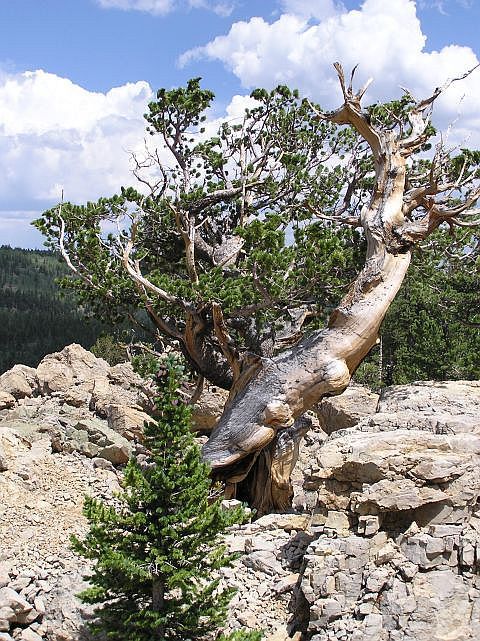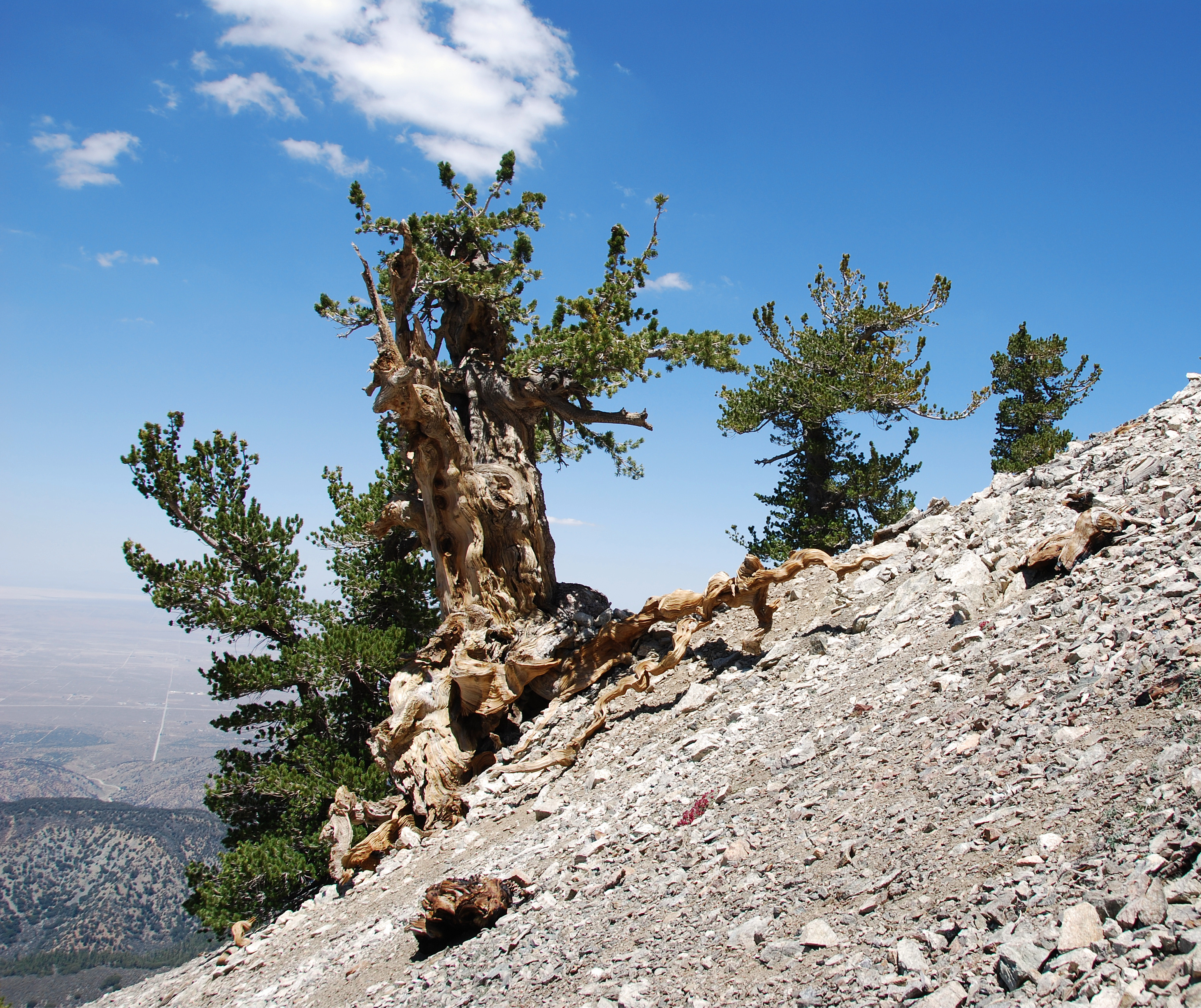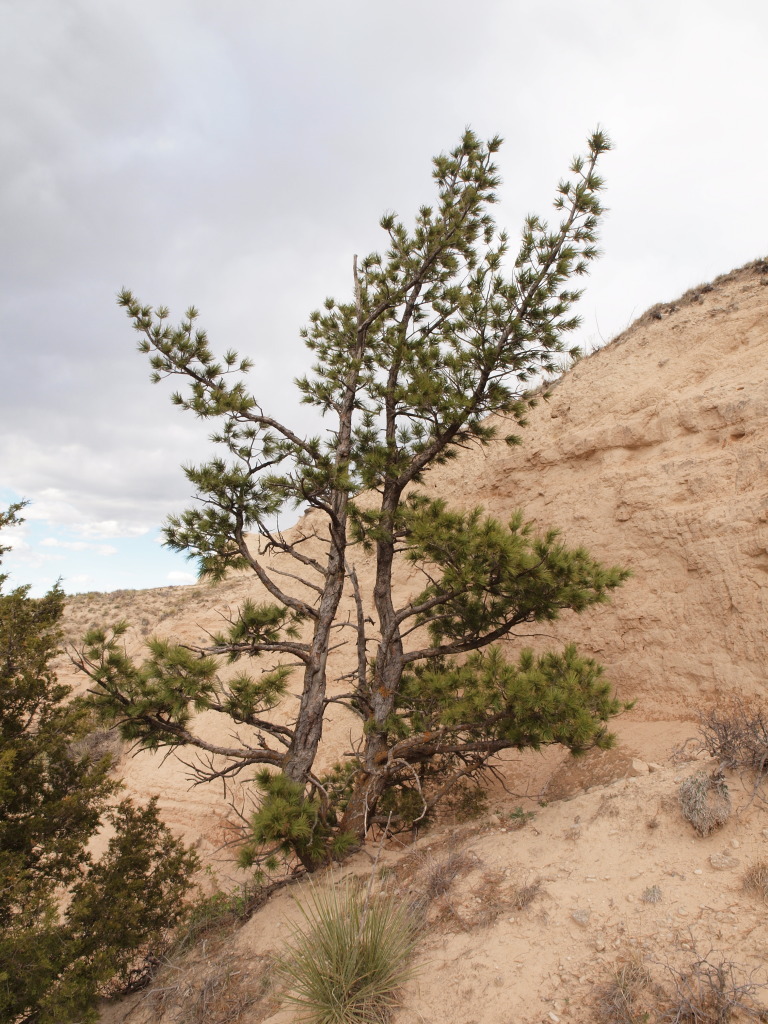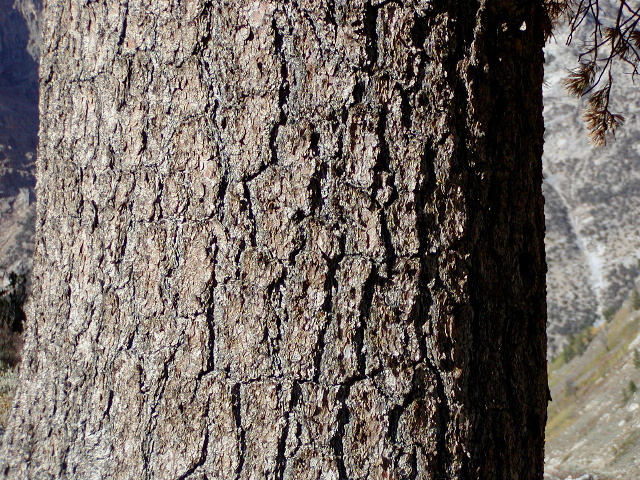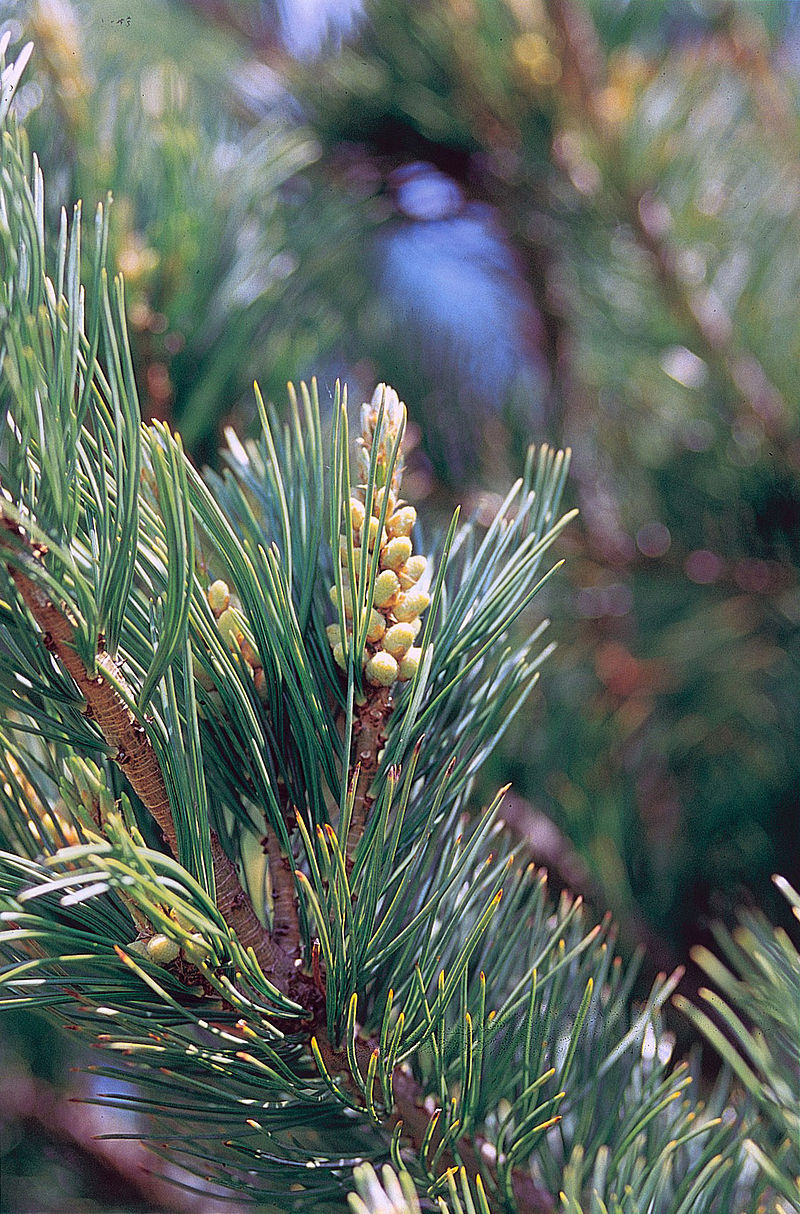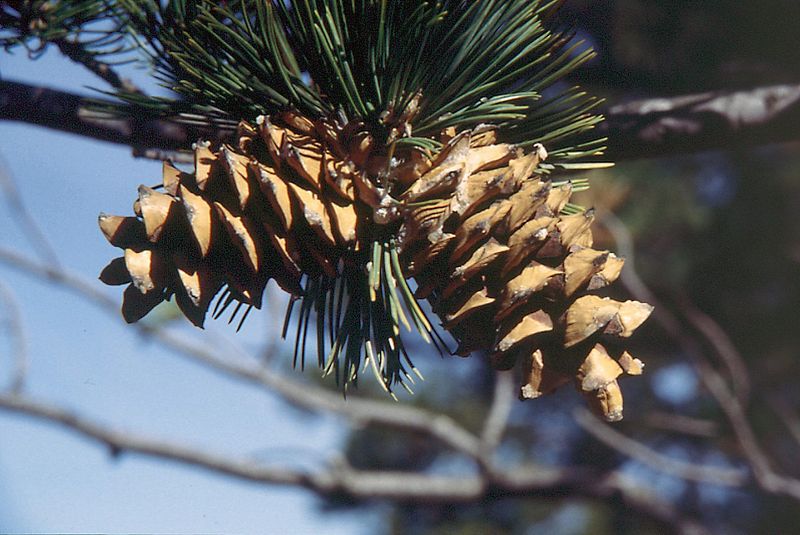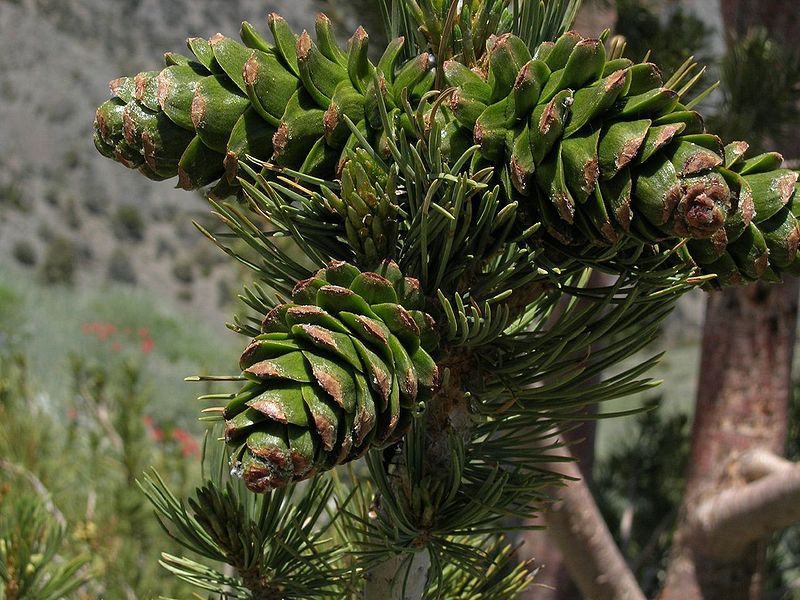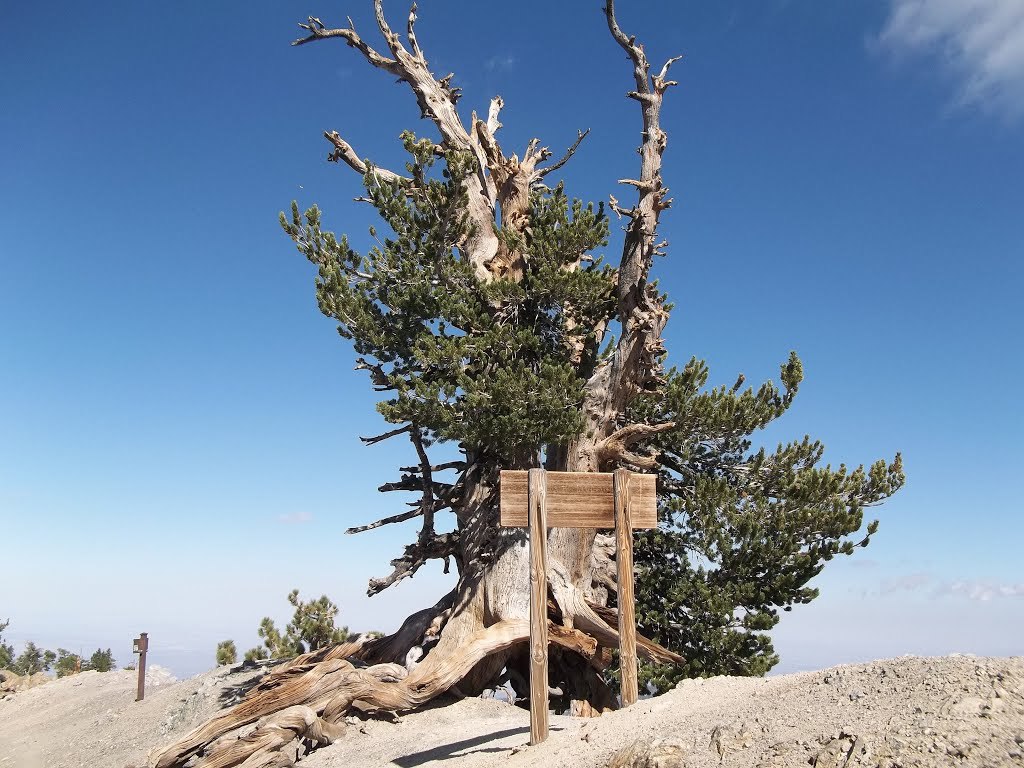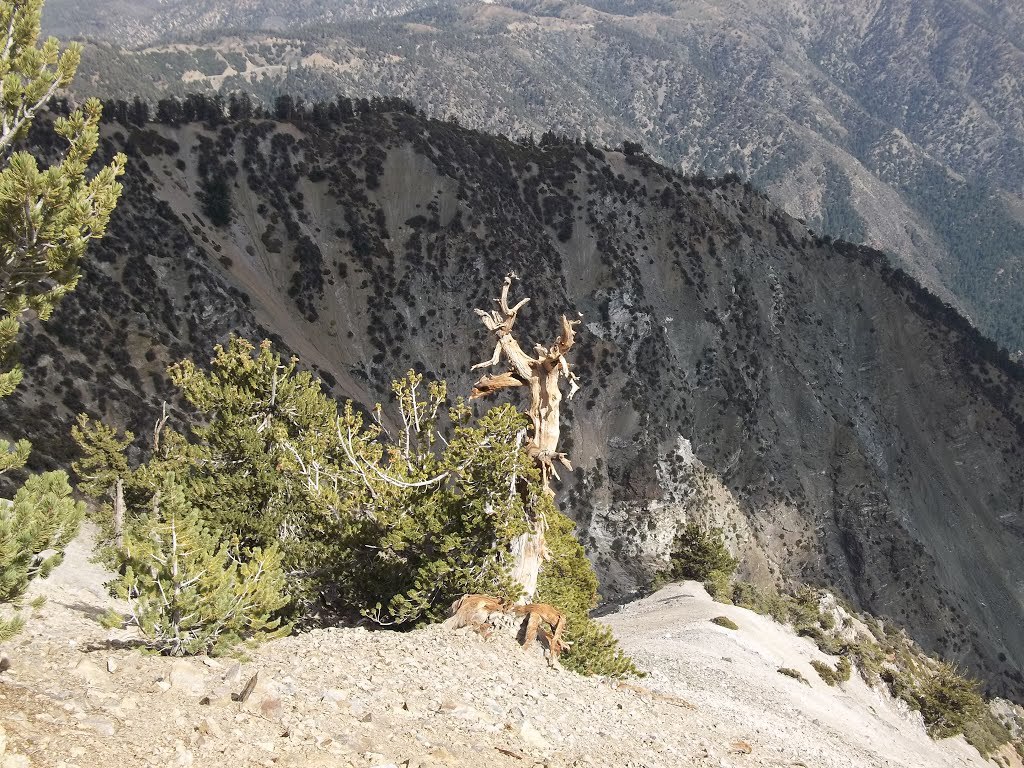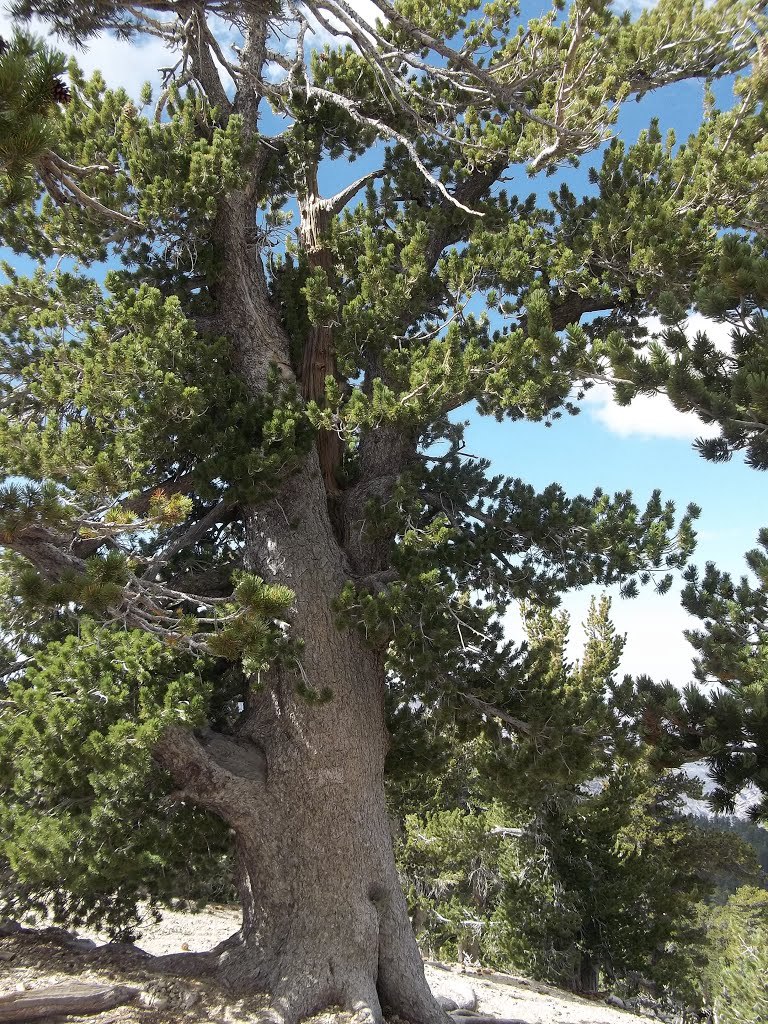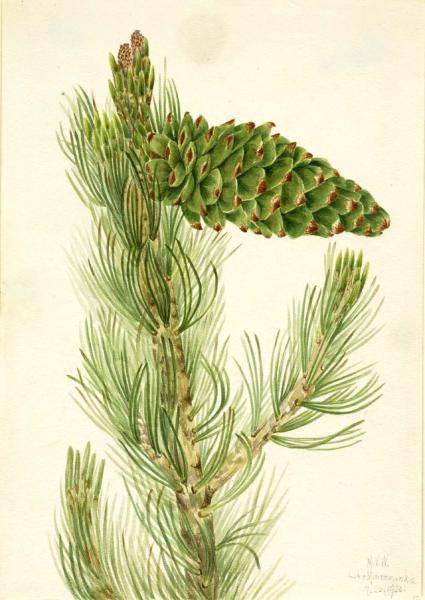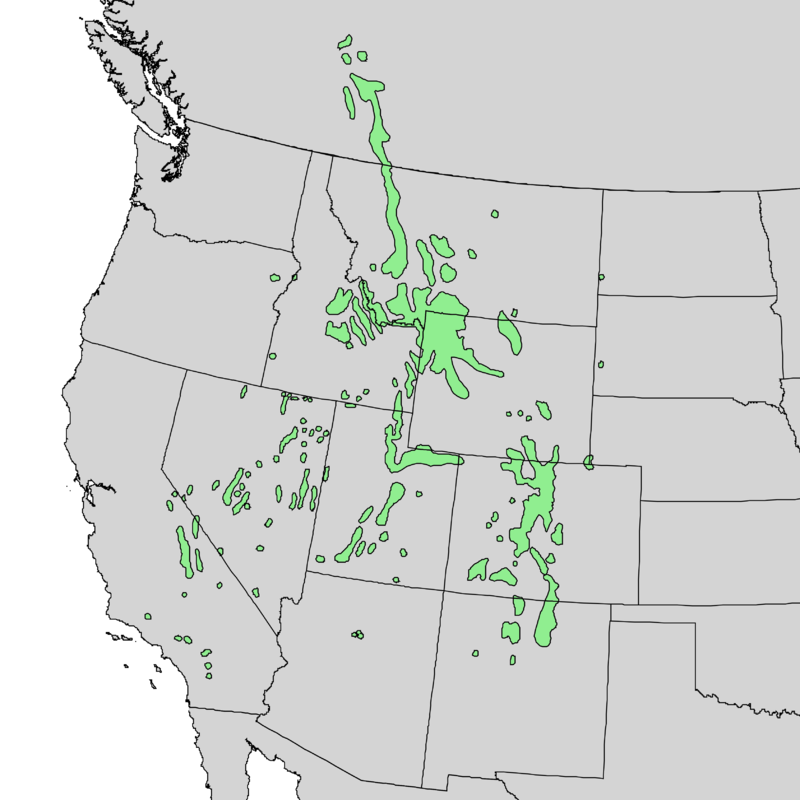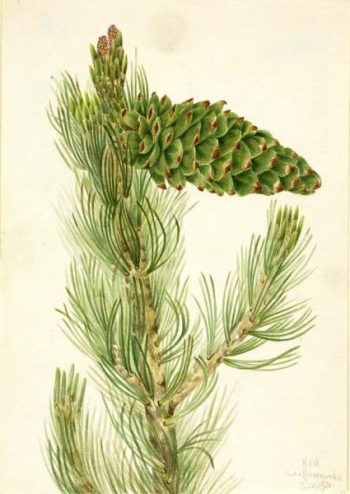
subgenus Strobus (Lemmon), section Quinquefoliae (Duhamel), subsection Strobus (Loudon).
Pinus flexilis, as described in 1823 by Edwin P. James (1797-1861), is commonly known as limber pine, limbertwig, and Rocky Mountain pine; as well as pino in the Spanish language and pin blanc de l'ouest in French. The species and common names described this pine's extremely flexible twigs.
Ethnobotany. Ronald Lanner, in his 1996 book, Made for each other: a symbiosis of birds and pines, states, "there is some evidence that the seeds were used as a food source by certain Great Basin indigenous nations, such as the Northern Shoshone. Numerous grinding stones at Alta Toquima Village, a high-elevation prehistoric site in central Nevada, also suggest use of pine nuts as food, with limber pine the likely source.
Legendary explorer and naturalist John Muir noted, "I have observed that miners, sheepherders, and other rural residents in its range (circa 1850 to 1950) used it for cabins, fencing, mine timbers, and doubtless, firewood. Throughout Utah and Nevada it is one of the principal timber-trees, great quantities being cut every year for the mines. The famous White Pine Mining District, White Pine City, and the White Pine Mountains have derived their names from it. However, the wood is too contorted and resinous, and the trees generally too small (though one wonders what stands were exterminated in the historical period) to warrant commercial exploitation in the modern age."
Description. Limber pine is an evergreen, coniferous species of tree that grows to mature heights of 40 to 50 feet (12 - 15 m) tall, with a straight to contorted trunk 24 to 36 inches (60 - 90 cm) in diameter, measured at breast height, and a conic crown that becomes rounded with age. Growth form may be substantially altered near timberline (krummholz form occurs) or on very dry sites.
In the absence of cones, Limber pine strongly resembles whitebark pine (P. albicaulis). However, its branches become roughened at a smaller size, at usually less than 4 inches (10 cm) in diameter, greater in P. albicaulis. On older trees with greater than 12 inch (30 cm) trunk diameter, limber pine bark is usually composed of longitudinal reddish-brown plates with intervening fissures, while whitebark pine bark becomes light brown and thinly platy without conspicuous fissures. When in flower, whitebark pollen cones are a striking red color, while limber pine pollen cones are reddish or yellow. Saplings are very difficult to distinguish.
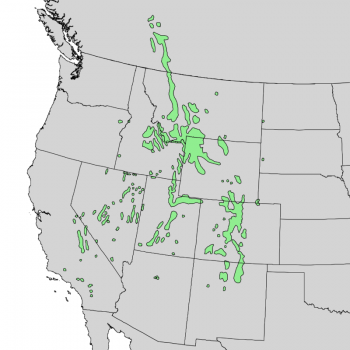
Distribution. This species is native to USA and Canada - the Rocky Mountains and inter-mountain ranges from Canada - southeastern British Columbia and southwestern Alberta, south through USA - Oregon, Idaho, Montana, North Dakota, South Dakota, Nebraska, Wyoming, Colorado, Utah and Nevada to northern New Mexico and west through northern Arizona to southern California growing at elevations of 4,500 to 12,000 feet (1,500 - 3,700 m) above sea level, preferring dry, rocky slopes and ridges of high mountains up to timberline, often occurring in pure stands.
Hardy to USDA Zone 3 - cold hardiness limit between -40° and -30°F (-39.9° and -34.4°C).
